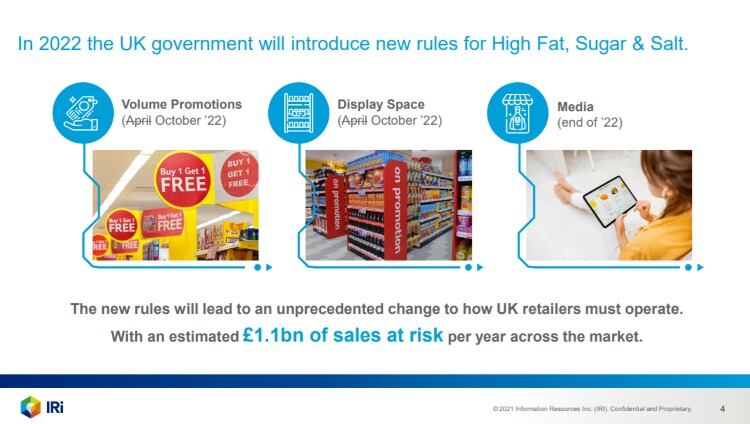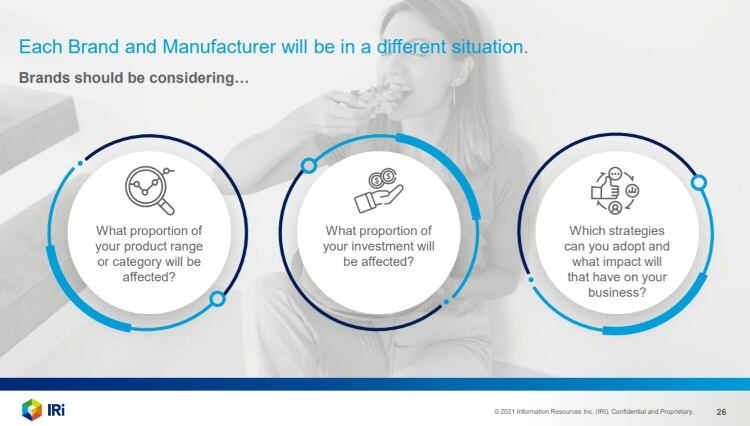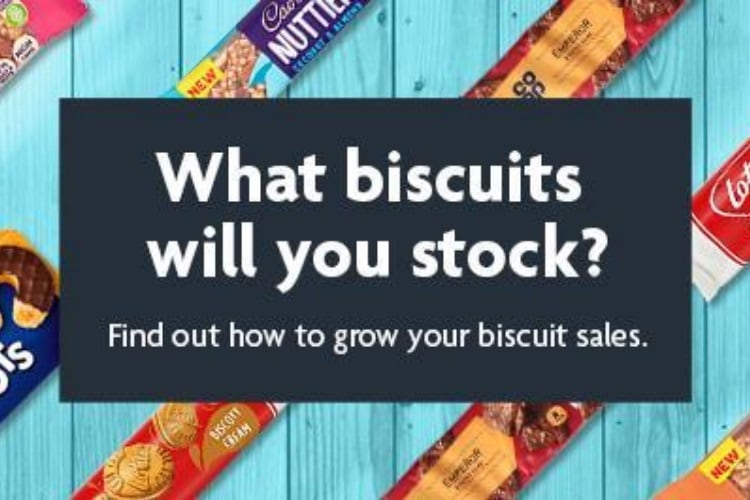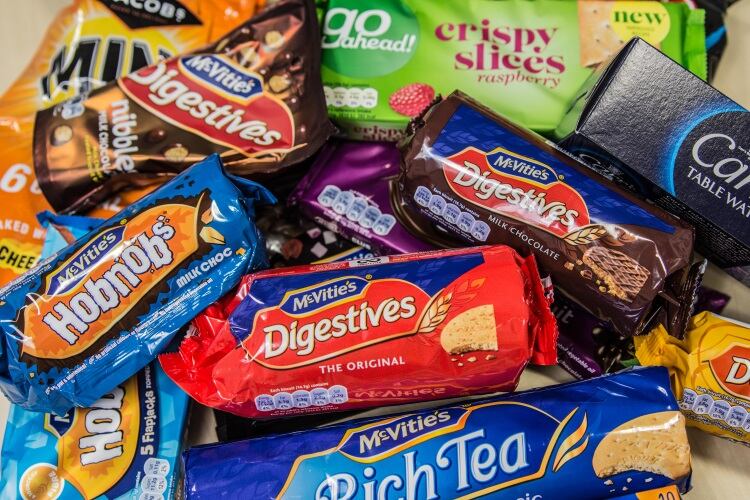According to IRI Analytics of UK major multiples in 2019, HFSS categories – which run the gamut from indulgent baked goods and snacks, to yoghurts and fruit juices – currently make up 38% of actual store space across the UK’s retail sector.
This, is expects, will drop to just 12% when the restrictions are introduced.
Across all HFSS categories, IRI forecasts around 5% of sales are at risk, although some categories will be more impacted than others.
It believes chocolate will be most impacted, with 14% of sales forecasted to be lost, due to its reliance on incremental sales from being on display and from volume promotions.
This will be followed by the biscuit category, with 9% of sales expected to sail out the window, prompting biscuit giants like McVitie’s maker pladis to launch initiatives to help retailers.
Crisps, snacks and nuts will feel an 8% sales blow, says IRI, while the cake category is expected to say goodbye to 7% of sales.

The race for space
In chilled, the change is expected to be much more drastic. IRI’s analysis shows HFSS products like desserts, pizza and yoghurts, which currently have 52% of display space, will drop to just 18%.
In terms of incremental value within chilled dairy and desserts, IRI data shows that butters, fats and margarines (with 13% of off-shelf space) deliver the most value, with £4,608 of incremental sales per unit of display. Desserts and yoghurts have a much lower impact, delivering £995 and £1,060 respectively on sales uplift, despite taking up more than 50% of shelf space.
Estimated impact on HFSS categories due to instore restrictions:
Source: IRI Analytics, HFSS, based on 2019 Major Multiples
Preparing the way

Overall, the new rules are expected to place an estimated £1.1bn of sales at risk per year across the UK retail landscape, along with £192m of UK advertising spend (70% of HFSS spend is on TV and paid-for digital, says IRI).
However, it’s not all doom and gloom, says Joe Harriman, IRI’s HFSS strategic consultant.
“With the ban on in-store promotional activity and display for HFSS products, this is a real opportunity for brands that have no in-category competition or that offer healthier alternatives as retailers look to rethink their ranges,” says Harriman.
“It’s not just newly available space either. With retailers rethinking their store layout, with initiatives like ‘power aisles’ and ‘premium’ in-aisle displays, there are plenty of opportunities for both LFSS (low fat salt sugar) and HFSS categories to benefit.”
He adds the lasting legacy of the HFSS regulations will be the impact on NPD and how manufacturers plan to develop and launch new products in the future.
“We know that 91% of products fail and are gone within 12-18 months. We also know that 16% of all new products have some off-shelf support in the first four weeks after launch, but this will no longer be allowed for HFSS products,” adds Harriman.
“Manufacturers and retailers will need to make sure NPDs don’t fail and to think seriously about how they launch new products in the future.”
IRI has pinpointed five key strategies that producers and retailers should look at to overcome the expected impact of HFSS restrictions.
The market research says each brand and manufacturer will have its unique situation, however, each should consider reformulation where possible, promoting different lines, launching healthier brands, making changes to macro space and adjusting channel strategy.






